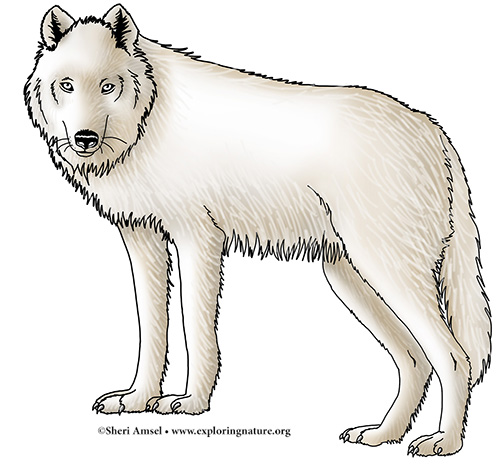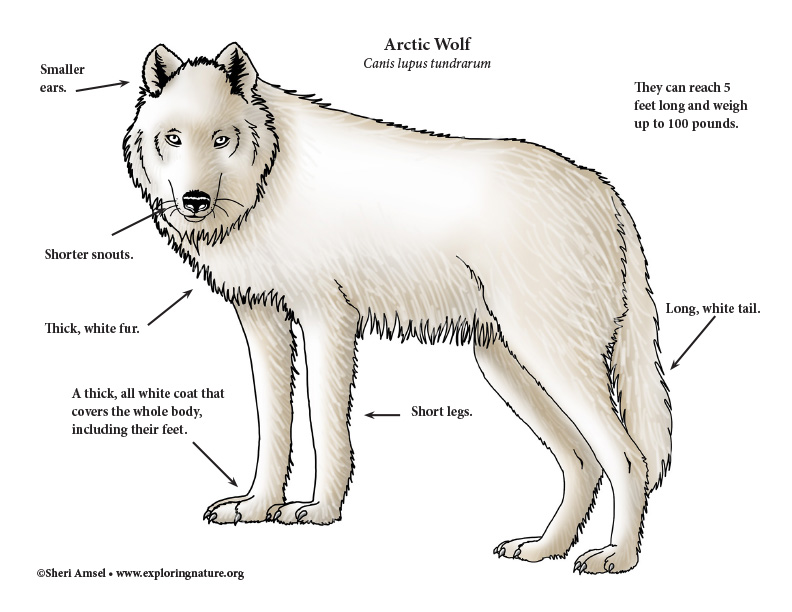

They are found throughout the Arctic.
They live on the rocky, open tundra.
They can reach 5 feet long and weigh up to 100 pounds. They are the largest of the wolves. They have a thick, all white coat that covers their whole body, including their feet. They have smaller ears, shorter snouts and legs and weigh more than timber wolves. These are all things that help the arctic wolf survive the cold.
They don't make dens. They sleep out in the cold, wrapping their tails to protect their faces. They howl like all wolves, but also whimper, whine, growl, bark, and yip. Researchers think that wolves howl to mark their territory.
They eat Arctic hares, lemmings, caribou and young musk oxen (carnivores).
Their only real predator is man.
Females are pregnant for 9 weeks (gestation). She has 6-7 pups in her litter, born May-June. The male brings food to her while she is still nursing. In a pack, only the top wolves (alpha) have pups. The whole pack will take turns feeding, caring for and teaching the pups.
They can live up to 10 years in the wild. They are listed as near threatened on the CITES List (International List) and endangered on the U.S. Federal Endangered Species List.
Kingdom: Animalia
Phylum: Chordata
Class: Mammalia
Order: Carnivora
Family: Canidae
Genus: Canis
Species: Canis lupus
Subspecies: Canis lupus arctos
When you research information you must cite the reference. Citing for websites is different from citing from books, magazines and periodicals. The style of citing shown here is from the MLA Style Citations (Modern Language Association).
When citing a WEBSITE the general format is as follows.
Author Last Name, First Name(s). "Title: Subtitle of Part of Web Page, if appropriate." Title: Subtitle: Section of Page if appropriate. Sponsoring/Publishing Agency, If Given. Additional significant descriptive information. Date of Electronic Publication or other Date, such as Last Updated. Day Month Year of access < URL >.
Amsel, Sheri. "Wolf (Arctic)" Exploring Nature Educational Resource ©2005-2024. March 26, 2024
< http://www.exploringnature.org/db/view/405 >

